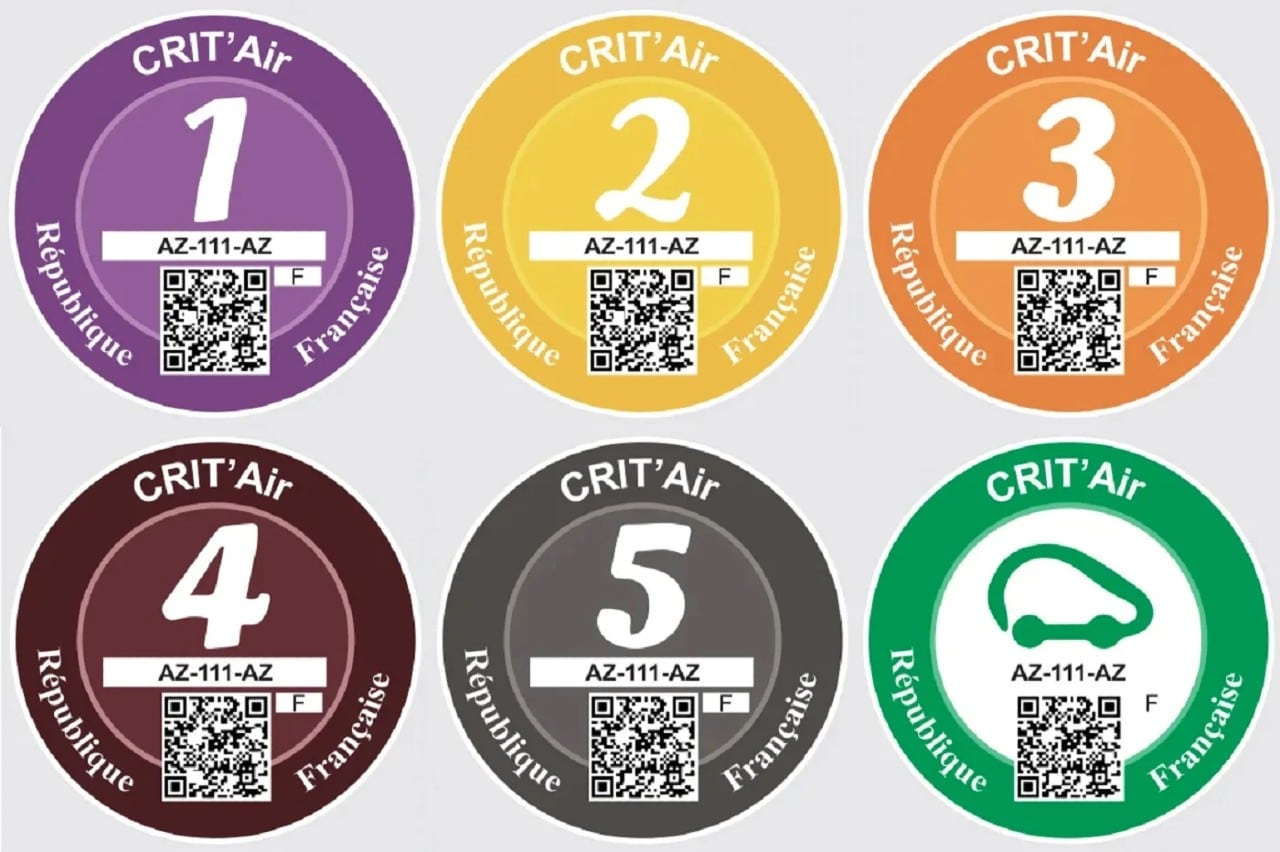Crit’Air Vignette: All You Need to Know About the Air Quality Certificate

Gradually, Low Emission Zones (LEZ) will ban the most polluting cars from major cities and metropolitan areas, relying on the Crit’Air sticker.
The traditional vehicle sticker no longer exists since 2005. Requiring renewal every year, it was a tax for all cars circulating in France. However, a new sticker has appeared on windshields: the Crit’Air sticker. It is the more popular name for what is also called the Air Quality Certificate.
Crit’Air Sticker and ZFE-m, the Same Fight
Following the example of other countries like Sweden, Italy, or the United Kingdom, France has established Low Emission Zones. Known as ZFE or rather ZFE-m (m for mobility), these zones are meant to gradually phase out the most polluting cars from large urban areas. But how to target vehicle categories? This is why the Crit’Air Sticker exists, since 2016 according to the order, and becomes mandatory in these ZFE zones for easier control.
What is the Crit’Air of my car?
Car classification is based on 6 different levels: unclassified, and levels from Crit’Air 5 to Crit’Air 1. Crit’Air 5 indicates the oldest and most polluting passenger vehicles, while Crit’Air 1 includes recent cars producing less pollution. There is also a special green sticker for electric and hydrogen cars.
Discover the different Crit’Air stickers:
- Crit’Air 1: gasoline cars after January 1, 2011, GPL, GNV, and plug-in hybrids;
- Crit’Air 2: gasoline cars after January 1, 2006, and diesel after January 1, 2011;
- Crit’Air 3: gasoline cars after January 1, 1997, and diesel after January 1, 2006;
- Crit’Air 4: gasoline cars after January 1, 1997, and diesel after January 1, 2001;
- Crit’Air 5: gasoline cars after January 1, 1997, and diesel after January 1, 1997;
- Unclassified: gasoline and diesel cars manufactured before 1997.
- Electric (or green): electric and hydrogen cars.
How much does it cost? How to get my Crit’Air sticker?
Ordering a sticker is directly handled by the public service. Beware of Crit’Air scams via emails and SMS messages attempting to scam you out of hundreds of euros. You can choose to order the air quality certificate online, or by mail using a downloadable form here.
The cost of this sticker is very low, totaling €3.72, which includes €3.11 + €0.61 for postage. As of August 28, 2022, 23 million Crit’Air stickers had been issued, representing more than half of the cars on the road.
Which Crit’Air cars will no longer be allowed to drive in 2023?
The ZFE zones aim to include all cities with over 150,000 inhabitants by 2025. But in 2023, only 11 cities and their suburbs have implemented this measure. Not all have the same deployment schedule, nor do they ban the same cars. Here are the stickers banned in these urban areas:
- Grenoble;
- Lyon;
- Marseille;
- Montpellier;
- Nice;
- Paris;
- Rouen;
- Reims;
- Saint-Étienne;
- Strasbourg;
- Toulouse.
What are the risks if I drive without a Crit’Air sticker in a ZFE?
Since the sticker is tied to the ZFE system, it is strictly mandatory within these zones. This applies to both moving and parked vehicles. The sticker must be displayed on the windshield and match the vehicle’s registration number.
If you drive or park in a ZFE without a sticker or with a prohibited sticker, you risk a fine. The fine is Class 3 for a passenger car, amounting to €68. The penalty for heavy vehicles is more expensive, as it is Class 4, which costs €135.
Read also: ZFE: which cities can hope for exemptions?
This page is translated from the original post "Vignette Crit’Air : tout savoir sur le Certificat Qualité de l’air" in French.
We also suggestthese articles:
Also read





